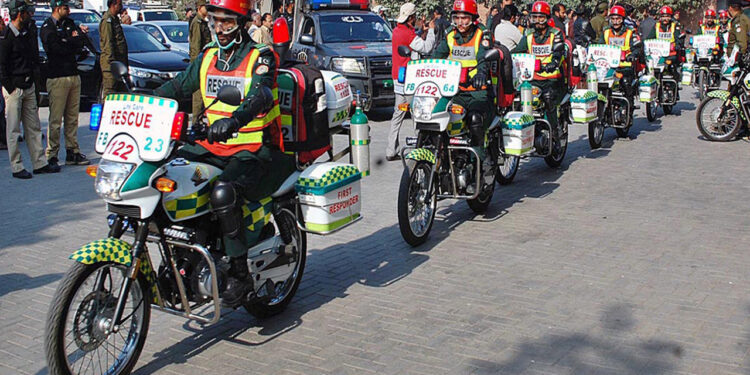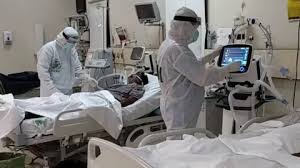A groundbreaking initiative has been launched in Sindh with the introduction of emergency motorbikes equipped with life-saving medical equipment, representing a significant advancement in modern ambulance services.
These motorcycle ambulances aim to provide swift first aid assistance, particularly in challenging scenarios such as traffic jams and narrow streets within urban areas.
Under the auspices of the World Health Organization (WHO), the Health Department has delivered 25 emergency bikes to the Sindh Integrated Emergency and Health Services (1122). Caretaker Health Minister Dr. Saad Khalid Niaz received the 25 bikes, each outfitted with cutting-edge medical tools, from WHO at the EPI Center and subsequently transferred them to 1122.
Equipped with essential medical supplies, including a fire extinguisher, mini medicine kit, oxygen mask, glucometer, and CPR mask, among others, these motorbike ambulances aim to reach patients within 5 to 8 minutes, providing immediate first aid before transferring them to the nearest ambulance.
During emergencies, patients will not only receive initial first aid but also be treated onsite with life-saving medication and CBR (chemical, biological, radiological) equipment.
Speaking at a press conference, Caretaker Health Minister Dr. Saad Khalid Niaz emphasized the rapid response capabilities of these devices and bikes, particularly in areas with limited vehicular access. He noted the current shortage of emergency bikes, highlighting the need for 1100 such units while the program currently possesses only 371 bikes.
Dr. Saad Khalid Niaz urged the World Health Organization to implement a robust accountability system to monitor the proper utilization of supplies.
Dr. Sara, head of WHO Sindh, outlined plans for a 15-day training program for paramedic staff, with emergency medical technicians set to deploy these bikes on the streets starting in early April. Training will continue for 3 to 6 months.
According to 1122 authorities, the primary goal of this service is to ensure timely assistance to individuals affected by accidents or illnesses in congested traffic areas and challenging terrains. Despite their outward appearance resembling standard heavy bikes, these vehicles are equipped with modern technology and medical facilities, functioning effectively as ambulances.







